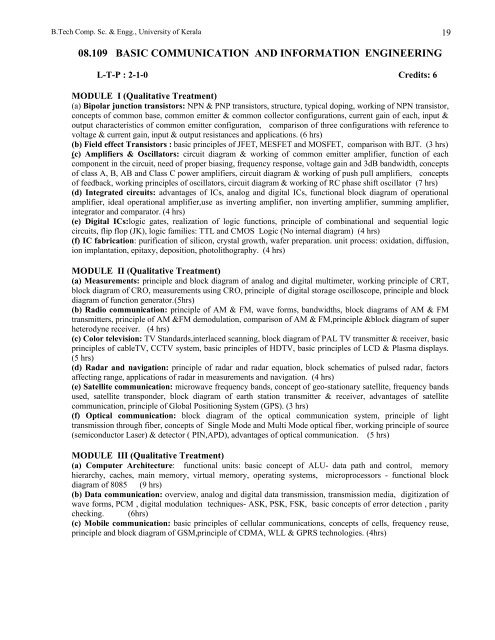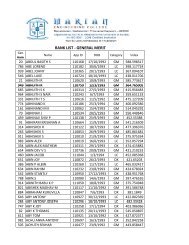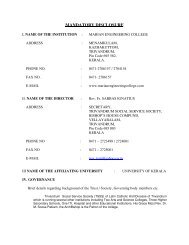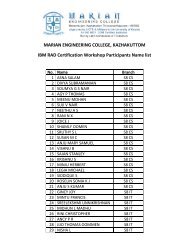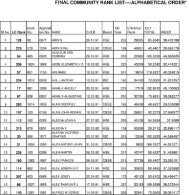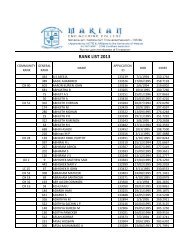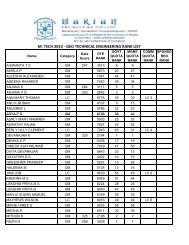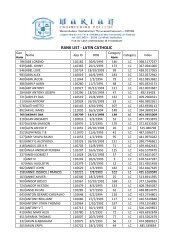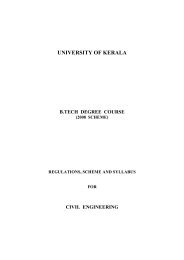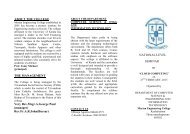UNIVERSITY OF KERALA - Marian Engineering College
UNIVERSITY OF KERALA - Marian Engineering College
UNIVERSITY OF KERALA - Marian Engineering College
You also want an ePaper? Increase the reach of your titles
YUMPU automatically turns print PDFs into web optimized ePapers that Google loves.
B.Tech Comp. Sc. & Engg., University of Kerala 19<br />
08.109 BASIC COMMUNICATION AND INFORMATION ENGINEERING<br />
L-T-P : 2-1-0 Credits: 6<br />
MODULE I (Qualitative Treatment)<br />
(a) Bipolar junction transistors: NPN & PNP transistors, structure, typical doping, working of NPN transistor,<br />
concepts of common base, common emitter & common collector configurations, current gain of each, input &<br />
output characteristics of common emitter configuration, comparison of three configurations with reference to<br />
voltage & current gain, input & output resistances and applications. (6 hrs)<br />
(b) Field effect Transistors : basic principles of JFET, MESFET and MOSFET, comparison with BJT. (3 hrs)<br />
(c) Amplifiers & Oscillators: circuit diagram & working of common emitter amplifier, function of each<br />
component in the circuit, need of proper biasing, frequency response, voltage gain and 3dB bandwidth, concepts<br />
of class A, B, AB and Class C power amplifiers, circuit diagram & working of push pull amplifiers, concepts<br />
of feedback, working principles of oscillators, circuit diagram & working of RC phase shift oscillator (7 hrs)<br />
(d) Integrated circuits: advantages of ICs, analog and digital ICs, functional block diagram of operational<br />
amplifier, ideal operational amplifier,use as inverting amplifier, non inverting amplifier, summing amplifier,<br />
integrator and comparator. (4 hrs)<br />
(e) Digital ICs:logic gates, realization of logic functions, principle of combinational and sequential logic<br />
circuits, flip flop (JK), logic families: TTL and CMOS Logic (No internal diagram) (4 hrs)<br />
(f) IC fabrication: purification of silicon, crystal growth, wafer preparation. unit process: oxidation, diffusion,<br />
ion implantation, epitaxy, deposition, photolithography. (4 hrs)<br />
MODULE II (Qualitative Treatment)<br />
(a) Measurements: principle and block diagram of analog and digital multimeter, working principle of CRT,<br />
block diagram of CRO, measurements using CRO, principle of digital storage oscilloscope, principle and block<br />
diagram of function generator.(5hrs)<br />
(b) Radio communication: principle of AM & FM, wave forms, bandwidths, block diagrams of AM & FM<br />
transmitters, principle of AM &FM demodulation, comparison of AM & FM,principle &block diagram of super<br />
heterodyne receiver. (4 hrs)<br />
(c) Color television: TV Standards,interlaced scanning, block diagram of PAL TV transmitter & receiver, basic<br />
principles of cableTV, CCTV system, basic principles of HDTV, basic principles of LCD & Plasma displays.<br />
(5 hrs)<br />
(d) Radar and navigation: principle of radar and radar equation, block schematics of pulsed radar, factors<br />
affecting range, applications of radar in measurements and navigation. (4 hrs)<br />
(e) Satellite communication: microwave frequency bands, concept of geo-stationary satellite, frequency bands<br />
used, satellite transponder, block diagram of earth station transmitter & receiver, advantages of satellite<br />
communication, principle of Global Positioning System (GPS). (3 hrs)<br />
(f) Optical communication: block diagram of the optical communication system, principle of light<br />
transmission through fiber, concepts of Single Mode and Multi Mode optical fiber, working principle of source<br />
(semiconductor Laser) & detector ( PIN,APD), advantages of optical communication. (5 hrs)<br />
MODULE III (Qualitative Treatment)<br />
(a) Computer Architecture: functional units: basic concept of ALU- data path and control, memory<br />
hierarchy, caches, main memory, virtual memory, operating systems, microprocessors - functional block<br />
diagram of 8085 (9 hrs)<br />
(b) Data communication: overview, analog and digital data transmission, transmission media, digitization of<br />
wave forms, PCM , digital modulation techniques- ASK, PSK, FSK, basic concepts of error detection , parity<br />
checking. (6hrs)<br />
(c) Mobile communication: basic principles of cellular communications, concepts of cells, frequency reuse,<br />
principle and block diagram of GSM,principle of CDMA, WLL & GPRS technologies. (4hrs)


